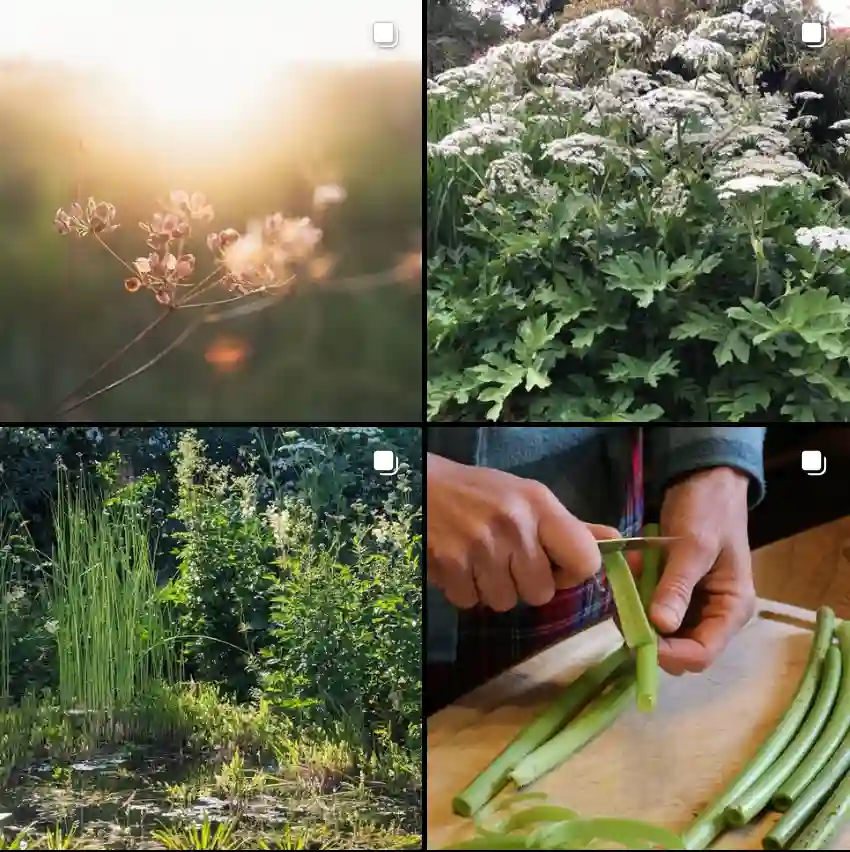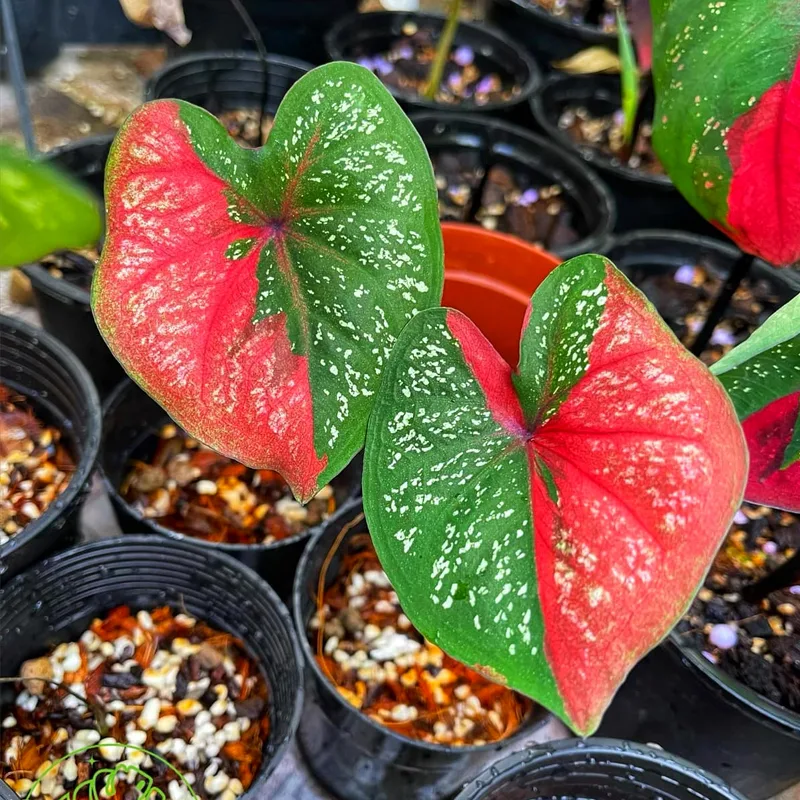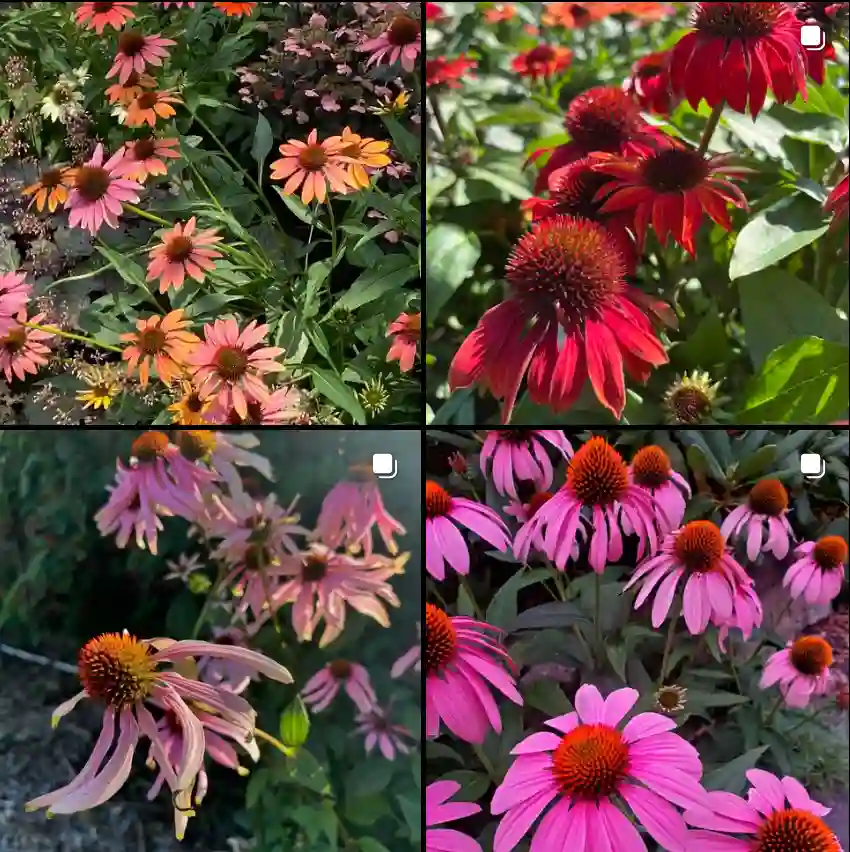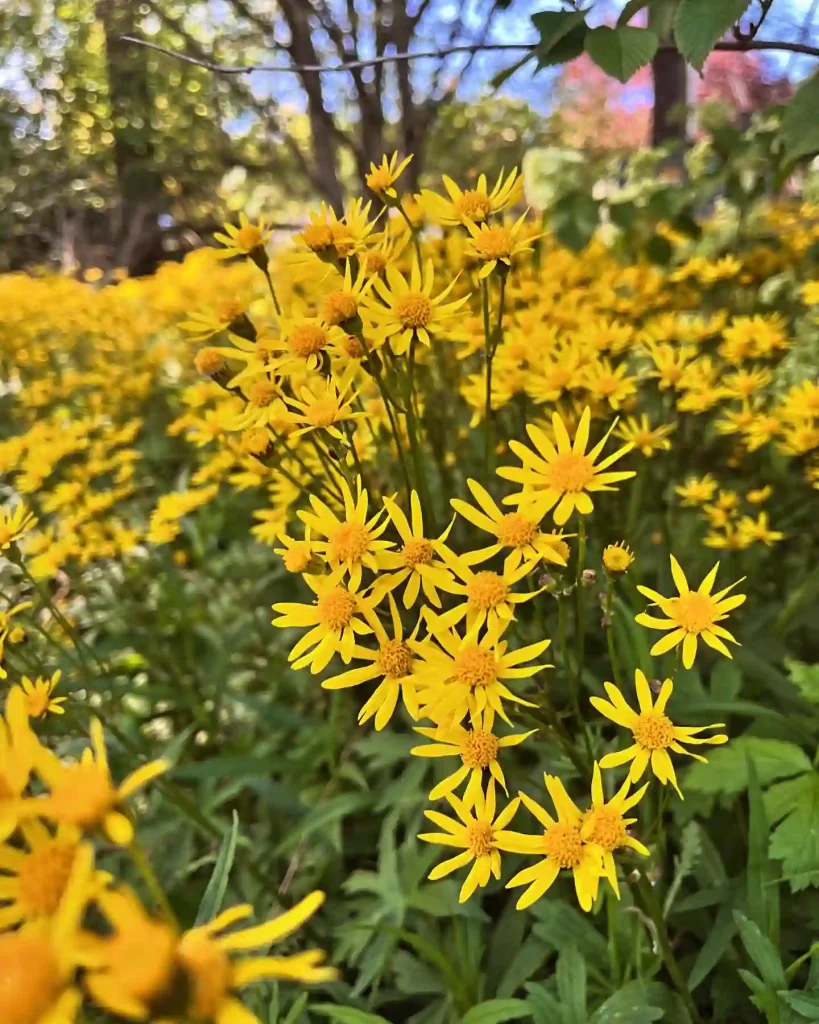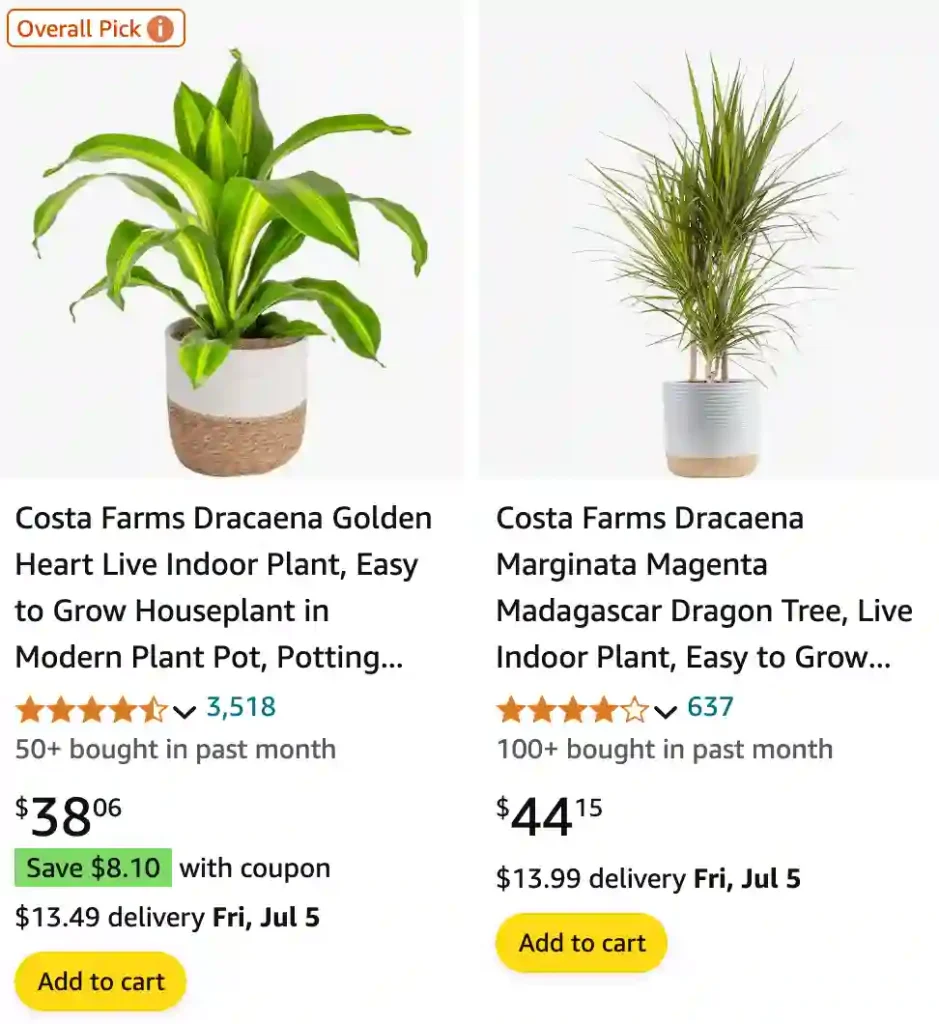
My Adventures with Dracaena: Unveiling the Secrets of the Dragon Tree
Ah, the Dracaena. With its vibrant foliage and architectural form, this houseplant has become a mainstay in my urban jungle. But let’s be honest, even the most low-maintenance plants come with their fair share of questions. Over the years, I’ve learned a lot about caring for these tropical beauties, and I’m here to share the knowledge! So, grab your watering can and settle in as we explore the fascinating world of Dracaena.
What is a Dracaena?
Dracaena belong to the Asparagaceae family, also known as the Dragon Tree, is a genus of evergreen plants native to Africa, Madagascar, and parts of Asia. These houseplants come in a variety of shapes and sizes, from the towering Dracaena marginata (Madagascar Dragon Tree) to the compact Dracaena compacta (Corn Plant). Their sword-like leaves, often variegated with green, yellow, or cream stripes, add a touch of the tropics to any indoor space.
Dracaena species
- Dracaena acaulis Baker
- Dracaena acutissima Hua
- Dracaena adamii Hepper
- Dracaena aethiopica (Thunb.) Byng & Christenh.
- Dracaena afromontana Mildbr.
- Dracaena ajgal (Benabid & Cuzin) Rivas Mart., Molero Mesa, Marfíl & G.Benítez
- Dracaena aletriformis (Haw.) Bos
- Dracaena angolensis (Welw. ex Carrière) Byng & Christenh.
- Dracaena angustifolia (Medik.) Roxb. Plant FAQs: Dracaena Angustifolia
- Dracaena arborea (Willd.) Link
- Dracaena arborescens (Cornu ex Gérôme & Labroy) Byng & Christenh.
- Dracaena ascendens (L.E.Newton) Byng & Christenh.
- Dracaena aubryana Brongn.
- Dracaena aubrytiana (Carrière) Byng & Christenh.
- Dracaena aurea H.Mann
- Dracaena bacularis (Pfennig ex A.Butler & Jankalski) Byng & Christenh.
- Dracaena bagamoyensis (N.E.Br.) Byng & Christenh.
- Dracaena ballyi (L.E.Newton) Byng & Christenh.
- Dracaena bhitalae (R.H.Webb & L.E.Newton) Takaw.-Ny. & Mucina
- Dracaena bicolor Hook.
- Dracaena borneensis (Merr.) Jankalski
- Dracaena brachystachys Hook.f.
- Dracaena braunii Engl.
- Dracaena breviflora Ridl.
- Dracaena brevifolia (L.E.Newton) Takaw.-Ny. & Thiede
- Dracaena bueana Engl.
- Dracaena bugandana Byng & Christenh.
- Dracaena bukedea Takaw.-Ny. & Mucina
- Dracaena burdettii (Chahin.) Byng & Christenh.
- Dracaena burmanica (N.E.Br.) Byng & Christenh.
- Dracaena bushii Damen
- Dracaena caboverdeana (Marrero Rodr. & R.S.Almeida) Rivas Mart., Lousã, J.C.Costa & Maria C.Duarte
- Dracaena calocephala Bos
- Dracaena cambodiana Pierre ex Gagnep.
- Dracaena camerooniana Baker
- Dracaena canaliculata (Carrière) Byng & Christenh.
- Dracaena cantleyi Baker
- Dracaena caulescens (N.E.Br.) Byng & Christenh.
- Dracaena cerasifera Hua
- Dracaena chahinianii (R.H.Webb & Myklebust) Takaw.-Ny. & Mucina
- Dracaena chiniana I.M.Turner
- Dracaena cincta Baker
- Dracaena cinnabari Balf.f. Plant FAQs: Dracaena Cinnabari
- Dracaena cochinchinensis (Lour.) S.C.Chen
- Dracaena coleana (T.G.Forrest) Takaw.-Ny. & Thiede
- Dracaena concinna Kunth
- Dracaena conduplicata (T.C.Cole & T.G.Forrest) Takaw.-Ny. & Thiede
- Dracaena conferta Ridl.
- Dracaena congoensis Hua
- Dracaena conspicua (N.E.Br.) Byng & Christenh.
- Dracaena cristula W.Bull
- Dracaena cubensis Vict.
- Dracaena curtisii Ridl.
- Dracaena cuspidata Ridl.
- Dracaena dawei (Stapf) Byng & Christenh.
- Dracaena dhofarica (T.A.McCoy & Lavranos) Takaw.-Ny. & Mucina
- Dracaena disticha (R.H.Webb & L.E.Newton) M.H.J.van der Meer
- Dracaena dooneri (N.E.Br.) Byng & Christenh.
- Dracaena downsii (Chahin.) Byng & Christenh.
- Dracaena draco (L.) L. Plant FAQs: Dracaena Draco
- Dracaena dumetescens (L.E.Newton) Byng & Christenh.
- Dracaena ebracteata (Cav.) Byng & Christenh.
- Dracaena eilensis (Chahin.) Byng & Christenh.
- Dracaena ellenbeckiana Engl.
- Dracaena elliptica Thunb. & Dalm.
- Dracaena enchiridiofolia (R.H.Webb & L.E.Newton) Takaw.-Ny. & Thiede
- Dracaena erythraeae (Mattei) Byng & Christenh.
- Dracaena fasciata (Cornu ex Gérôme & Labroy) Byng & Christenh.
- Dracaena fernaldii (H.St.John) Jankalski
- Dracaena finlaysonii Baker
- Dracaena floribunda Baker
- Dracaena fontanesiana Schult. & Schult.f.
- Dracaena forbesii (O.Deg.) Jankalski
- Dracaena forestii (L.E.Newton & R.H.Webb) Takaw.-Ny. & Thiede
- Dracaena forskaliana (Schult. & Schult.f.) Byng & Christenh.
- Dracaena fragrans (L.) Ker Gawl. Plant FAQs: Corn Plant – Dracaena Fragrans
- Dracaena francisii (Chahin.) Byng & Christenh.
- Dracaena frequens (Chahin.) Byng & Christenh.
- Dracaena ghiesbreghtii W.Bull ex J.J.Blandy
- Dracaena glomerata Baker
- Dracaena goldieana Bullen ex Mast. & T.Moore
- Dracaena gracillima (Chahin.) Byng & Christenh.
- Dracaena granulata Hook.f.
- Dracaena haemanthoides Bos ex Damen
- Dracaena halapepe (H.St.John) Jankalski
- Dracaena halemanuensis Jankalski
- Dracaena hallii (Chahin.) Byng & Christenh.
- Dracaena hanningtonii Baker
- Dracaena hargeisana (Chahin.) Byng & Christenh.
- Dracaena hewittii Ridl.
- Dracaena hokouensis G.Z.Ye
- Dracaena hosei (Ridl.) Jankalski
- Dracaena humiflora (D.J.Richards) Byng & Christenh.
- Dracaena hyacinthoides (L.) Mabb.
- Dracaena impressivenia Yu H.Yan & H.J.Guo
- Dracaena itumei (Mbugua) Byng & Christenh.
- Dracaena jayniana Wilkin & Suksathan
- Dracaena jiewhoei Hambali, Sulist. & Rugayah
- Dracaena kaweesakii Wilkin & Suksathan
- Dracaena kindtiana De Wild.
- Dracaena kirkii Baker
- Dracaena konaensis (H.St.John) Jankalski
- Dracaena kupensis Mwachala, Cheek, Eb.Fisch. & Muasya
- Dracaena laevifolia (R.H.Webb & L.E.Newton) Takaw.-Ny. & Mucina
- Dracaena lancea Thunb. & Dalm.
- Dracaena lancifolia (Ridl.) Jankalski
- Dracaena lavranii (R.H.Webb & Myklebust) Takaw.-Ny. & Mucina
- Dracaena laxissima Engl.
- Dracaena liberica (Gérôme & Labroy) Byng & Christenh.
- Dracaena longiflora (Sims) Byng & Christenh.
- Dracaena longifolia Ridl.
- Dracaena longistyla (la Croix) Byng & Christenh.
- Dracaena lunatifolia (L.E.Newton) Byng & Christenh.
- Dracaena malawiana Byng & Christenh.
- Dracaena mannii Baker
- Dracaena marachiensis (T.G.Forrest) Takaw.-Ny. & Thiede
- Dracaena marina Bos ex Damen
- Dracaena masoniana (Chahin.) Byng & Christenh.
- Dracaena mikephillipsii (R.H.Webb & L.E.Newton) M.H.J.van der Meer
- Dracaena mokoko Mwachala & Cheek
- Dracaena multiflora Warb. ex P.Sarasin & Sarasin
- Dracaena neobella N.Wei, Mwachala, G.W.Hu & Q.F.Wang
- Dracaena neorobusta Idrees & Z.Yong Zhang
- Dracaena newtoniana (T.G.Forrest) Byng & Christenh.
- Dracaena nilotica (Baker) Byng & Christenh.
- Dracaena nitens Welw. ex Baker
- Dracaena nitida (Chahin.) Byng & Christenh.
- Dracaena novoguineensis Gibbs
- Dracaena nyangensis Pellegr.
- Dracaena ombet Kotschy & Peyr.
- Dracaena ovata Ker Gawl.
- Dracaena parva (N.E.Br.) Byng & Christenh.
- Dracaena parviflora Baker
- Dracaena pearsonii (N.E.Br.) Byng & Christenh.
- Dracaena pedicellata (la Croix) Byng & Christenh.
- Dracaena penangensis Ridl.
- Dracaena pendula Ridl.
- Dracaena perrotii (O.Warburg) Byng & Christenh.
- Dracaena perrottetii Baker
- Dracaena pethera Byng & Christenh.
- Dracaena pfennigii (Mbugua) Takaw.-Ny. & Thiede
- Dracaena pfisteri (D.J.Richards) Byng & Christenh.
- Dracaena phanerophlebia Baker
- Dracaena phillipsiae (N.E.Br.) Byng & Christenh.
- Dracaena phrynioides Hook.
- Dracaena pinguicula (P.R.O.Bally) Byng & Christenh.
- Dracaena porteri Baker
- Dracaena powellii (N.E.Br.) Byng & Christenh.
- Dracaena powysii (L.E.Newton) Byng & Christenh.
- Dracaena praetermissa Bos
- Dracaena purpurea (Ridl.) Jankalski
- Dracaena raffillii (N.E.Br.) Byng & Christenh.
- Dracaena reflexa Lam. Plant FAQs: Dracaena Reflexa – Song of India
- Dracaena rockii (H.St.John) Jankalski
- Dracaena rosulata Mwachala & Eb.Fisch.
- Dracaena roxburghiana (Schult. & Schult.f.) Byng & Christenh.
- Dracaena rugosifolia (R.H.Webb & L.E.Newton) Takaw.-Ny. & Thiede
- Dracaena sambiranensis (H.Perrier) Byng & Christenh.
- Dracaena sanderiana Mast.
- Dracaena sarawakensis (W.W.Sm.) Jankalski
- Dracaena scabra Bos
- Dracaena scimitariformis (D.J.Richards) Byng & Christenh.
- Dracaena senegambica (Baker) Byng & Christenh.
- Dracaena serpenta Byng & Christenh.
- Dracaena serrulata Baker
- Dracaena siamica Ridl.
- Dracaena singapurensis Ridl.
- Dracaena singularis (N.E.Br.) Byng & Christenh.
- Dracaena sinus-simiorum (Chahin.) Byng & Christenh.
- Dracaena spathulata Byng & Christenh.
- Dracaena specksii (R.H.Webb & Myklebust) Takaw.-Ny. & Mucina
- Dracaena spicata Roxb.
- Dracaena steudneri Engl.
- Dracaena stuckyi (God.-Leb.) Byng & Christenh.
- Dracaena subspicata (Baker) Byng & Christenh.
- Dracaena subtilis (N.E.Br.) Byng & Christenh.
- Dracaena suffruticosa (N.E.Br.) Byng & Christenh.
- Dracaena surculosa Lindl. Plant FAQs: Dracaena Surculosa
- Dracaena tamaranae Marrero Rodr., R.S.Almeida & Gonz.-Mart.
- Dracaena testudinea Byng & Christenh.
- Dracaena tholloniana Hua
- Dracaena thwaitesii Regel
- Dracaena timorensis Kunth
- Dracaena transvaalensis Baker
- Dracaena trifasciata (Prain) Mabb.
- Dracaena umbraculifera Jacq.
- Dracaena umbratica Ridl.
- Dracaena usambarensis Engl.
- Dracaena vanillosa (M.Burkart & Scharf) Takaw.-Ny. & Thiede
- Dracaena varians (N.E.Br.) Byng & Christenh.
- Dracaena viridiflora Engl. & K.Krause
- Dracaena volkensii (Gürke) Byng & Christenh.
- Dracaena wakaensis Damen & Quiroz
- Dracaena waltersiae Damen
- Dracaena xiphophylla Baker
- Dracaena yuccifolia Ridl.
- Dracaena zebra Byng & Christenh.
- Dracaena zeylanica (L.) Mabb.
How to Care for Dracaena?
Dracaena is a forgiving houseplant, but a little TLC goes a long way. Here’s the lowdown on creating the perfect environment for your Dragon Tree:
- Light: Dracaena thrives in bright, indirect sunlight. Avoid harsh direct sun, which can scorch the leaves. In low-light conditions, your plant may become leggy and lose its vibrant colors.
- Water: Don’t drown your Dracaena! Water deeply when the top inch of soil feels dry to the touch. Allow excess water to drain freely from the pot’s drainage holes. Overwatering is a leading cause of yellowing leaves and root rot.
- Soil: A well-draining potting mix is essential. Opt for a mixture specifically formulated for houseplants, or create your own by combining potting soil with perlite or sand.
- Temperature and Humidity: Dracaena enjoys average room temperatures between 65-80°F (18-27°C). They tolerate average household humidity but appreciate occasional misting, especially in dry winter months.
How to propagate Dracaena?
Feeling a bit ambitious? Dracaena can be easily propagated through stem cuttings. Here’s how:
- Choose a healthy stem with several nodes (leaf bumps).
- Sharply cut the stem just below a node, leaving at least an inch of stem below the cut.
- Dip the cut end in rooting hormone (optional) and plant it in a pot filled with moist potting mix.
- Cover the pot loosely with a plastic bag to create a mini greenhouse.
- Place the pot in bright, indirect sunlight and keep the soil moist but not soggy.
- With patience, roots should develop within a few weeks. Once established, remove the plastic bag and care for your new Dracaena plant as usual.
How to pronounce Dracaena?
No need to feel tongue-tied! Dracaena is pronounced “druh-SEE-nuh” with the emphasis on the first syllable. Now you can confidently flaunt your botanical vocabulary.
Why are my Dracaena leaves turning yellow and brown?
There are a few culprits behind yellowing or browning leaves:
- Overwatering: This is the most common cause. Check the soil moisture and adjust your watering habits accordingly.
- Underwatering: While less likely, underwatering can also cause leaves to turn brown and crispy.
- Lack of light: Dracaena needs sufficient indirect light. If placed in a dark corner, the leaves may lose their color.
- Nutrient deficiency: Occasional fertilization with a balanced houseplant food can help prevent yellowing.
How to repot Dracaena?
As your Dracaena grows, it will eventually outgrow its pot. Repotting every 1-2 years into a slightly larger pot with fresh potting mix will ensure healthy growth.
Here’s a quick guide:
- Water your Dracaena thoroughly a day or two before repotting.
- Gently loosen the plant from its current pot.
- Choose a new pot that’s 1-2 inches wider in diameter than the old one.
- Fill the new pot with fresh potting mix, leaving enough space for the root ball.
- Position the Dracaena in the new pot and fill in the gaps with fresh potting mix.
- Water your newly repotted Dracaena and monitor it closely for a few weeks.
Can Dracaena be outside?
While Dracaena thrives indoors, it can also enjoy some time outdoors during the warmer months. Place it in a sheltered location with dappled sunlight, protecting it from harsh winds and direct sun. Remember to bring it back indoors before the temperature dips below 60°F (15°C). Don’t forget to acclimate your plant gradually to outdoor conditions to avoid stress.
How to treat leaf spot disease on Dracaena?
Fungal or bacterial leaf spot disease can sometimes affect Dracaena, causing brown or yellow spots on the leaves. Here’s how to fight back:
- Isolation: Quarantine your Dracaena to prevent the disease from spreading to other plants.
- Pruning: Remove any severely affected leaves with clean shears.
- Fungicide: For persistent cases, apply a fungicide specifically labeled for houseplants according to the manufacturer’s instructions.
- Improve Airflow: Ensure good air circulation around your plant to prevent moisture buildup.
Is Dracaena safe for cats and dogs?
Good news for pet owners! Dracaena is considered non-toxic to both cats and dogs by the American Society for the Prevention of Cruelty to Animals (ASPCA). However, it’s always best to supervise pets around houseplants to avoid any potential nibbling.
Why is my Dracaena marginata drooping?
A drooping Dracaena marginata (Madagascar Dragon Tree) can signal several issues:
- Underwatering: Check the soil moisture. If dry, water deeply and allow excess water to drain.
- Overwatering: This is less likely, but soggy soil can cause root rot and drooping leaves. If this is the case, repot your Dracaena into fresh potting mix.
- Lack of light: Move your plant to a brighter location with indirect sunlight.
- Temperature stress: Ensure your Dracaena is in a comfortable temperature range of 65-80°F (18-27°C).
Does Dracaena like to be root bound?
Dracaena can tolerate being rootbound for a short period, but it’s not ideal for long-term health. When the roots fill the pot and start circling, the plant struggles to absorb water and nutrients properly. Repotting into a slightly larger pot with fresh potting mix will give your Dracaena the space it needs to thrive.
Do Dracaena flower?
Dracaena can flower indoors, but it’s a relatively rare occurrence. The flowers are small and white, often followed by small berries. However, the foliage is the main attraction of this houseplant.
With a little understanding and TLC, your Dracaena can flourish for years to come. So, enjoy the vibrant life it brings to your indoor space, and if any new questions sprout, don’t hesitate to keep exploring the fascinating world of houseplants!
If i die, water my plants!
